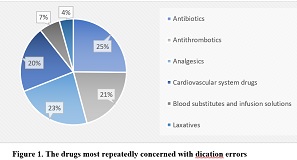DETERMINANTS OF PERINATAL DEPRESSION IN LICIN BANYUWANGI 2019

Downloads
Perinatal depression is a mood disorder that occurs in pregnant and postpartum women. To determine the magnitude of the risk of perinatal depression, this study uses the Edinburgh Postnatal Depression Scale (EPDS) screening tool. This study uses primary data in the form of a questionnaire to collect data on screening for depression in pregnant women and postpartum during the last 12 months. This research is an observational descriptive study with cross sectional research design. Sampling was done by cluster random sampling in Segobang Village, Jelun Village, and Banjar Village in Licin District, Banyuwangi Regency. The number of samples obtained was 31 samples. In the EPDS screening results of the pregnant women group, the results showed a very high risk of 18,75%. Whereas in the postpartum maternal group, the results showed a high risk of 6,67%, and a very high risk of 6,67%. Based on the results of the correlation test with Spearman's rho correlation, it can be concluded that there was a significant corellation between maternal age of postpartum with the risk of perinatal depression (α = 0,03).
Undang-Undang Republik Indonesia. 2014. UU nomor 18 Tahun 2014 about Kesehatan Jiwa.
Kemenkes. 2002. KMK RI No 220/MENKES/SK/III/2002 about Pedoman Umum Tim Pembina, Tim Pengarah, Tim Pelaksana Kesehatan Jiwa Masyarakat (TP-KJM).
WHO. 2018. Mental Health: a state of well-being. Available from: http://www.who.int/features/factfiles/mental_health/en/
Dira, IKPA and Wahyuni, AAS. 2016. Prevalensi dan Faktor Risiko Depresi Postpartum di Kota Denpasar Menggunakan Edinburgh Postnatal Depression Scale. E-JURNAL MEDIKA, VOL. 5 NO.7, JULI, 2016
Halbreich U & Karkun S, 2006. Cross-cultural and social diversity of prevalence of postpartum depression and depressive symptoms. J Affect Disord, 91: 97-111
Klainin P and Arthur DG, 2009. Postpartum depression in Asian cultures: A literature review. Int J Nurs Stud 46: 1355-73.
Munawaroh, 2008. Faktor-Faktor yang Berhubungan dengan Postpartum Blues pada Ibu Pasca Persalinan di Wilayah Kerja Puskesmas Kajhu Kecamatan Baitussalam Kabupaten Aceh Besar. Surakarta: Universitas Muhammadiyah Surakarta.
Faisal-Cury and Menezes. 2007. Prevalence of anxiety and depression during pregnancy in a private setting sample. Arch Womens Ment Health 10: 25–32
Alhusen, JL dan Alvarez, C. 2016. Perinatal Depression: A Clinical Update. Nurse Pract. 41(5) : 50-55.
Gelaye, B., Rondon, M., Araya, R., dan Williams, MA. 2016. Epidemiology of Maternal Depression, Risk Factors, and Child Outcomes in Low-Income and Middle-Income Countries. Lancet Psychiatry. 3(10) : 973-982.
Ayele T. A., Azale T., Alemu K., Abdissa Z., Mulat H., Fekadu A. 2016. Prevalence and associated factors of antenatal depression among women attending antenatal care service at gondar university hospital, northwest Ethiopia. PLoS ONE, 11(5).
Annerangi, W. dan Helda. 2013. Prevalensi dan Determinan Ansietas dan Depresi Antenatal di Puskesmas Kecamatan Pasar Minggu tahun 2013. Depok : FIK UI.
Corrigan CP, Kwasky AN, Groh CJ. 2015. Social Support, Postpartum Depression, and Professional Assistance: A Survey of Mothers in the Midwestern United States. J Perinat Educ. 24(1):48-60.
Muzakkir, Azniah, Aminah S. 2019. ‘Hubungan Antara Faktor Sosiodemografi dengan Potensi Kejadian Depresi Maternal pada Ibu Hamil di Puskesmas Pampang Kota Makassar'. Jurnal Ilmiah Kesehatan Diagnosis. (14) 2 : 199-203.
Kurniawan, S.E., Ratep,N and Westa, W. 2000. Faktor Penyebab Deperesi Pada Ibu Hamil Selama Asuhan Antenatal Setiap Trimester. Bali : Bagian/SMF Psikiatri Fakultas Kedokteran Universitas Udayana.
Copyright (c) 2020 Achmad Januar Er Putra, R. M. Yusuf Aji Samudera Nurrobi, Danang Mukarrom Prasetyo, Muhammad Vildan Akbar, Novita Oktaviana, Aliya Fatimah, Wandya Hikmahwati, Alma Pustika Kartikananda Retina Fibularis, Fatimah Az Zahro, Zahwa Afdhilani Azwan, Azimatul Karimah, Nira Ista Dewi

This work is licensed under a Creative Commons Attribution-ShareAlike 4.0 International License.
- The journal allows the author to hold the copyright of the article without restrictions.
- The journal allows the author(s) to retain publishing rights without restrictions.
- The legal formal aspect of journal publication accessibility refers to Creative Commons Attribution Share-Alike (CC BY-SA).
- The Creative Commons Attribution Share-Alike (CC BY-SA) license allows re-distribution and re-use of a licensed work on the conditions that the creator is appropriately credited and that any derivative work is made available under "the same, similar or a compatible license”. Other than the conditions mentioned above, the editorial board is not responsible for copyright violation.































